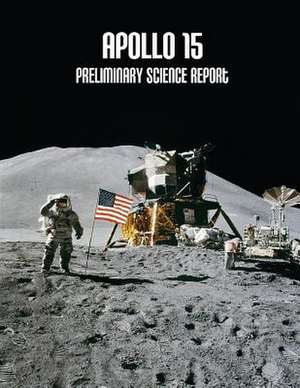Apollo 15
Autor National Aeronautics and Administrationen Limba Engleză Paperback
Preț: 265.46 lei
Nou
Puncte Express: 398
Preț estimativ în valută:
50.80€ • 55.16$ • 42.67£
50.80€ • 55.16$ • 42.67£
Carte disponibilă
Livrare economică 01-15 aprilie
Preluare comenzi: 021 569.72.76
Specificații
ISBN-13: 9781502726599
ISBN-10: 1502726599
Pagini: 570
Dimensiuni: 216 x 279 x 29 mm
Greutate: 1.3 kg
Editura: CREATESPACE
ISBN-10: 1502726599
Pagini: 570
Dimensiuni: 216 x 279 x 29 mm
Greutate: 1.3 kg
Editura: CREATESPACE
